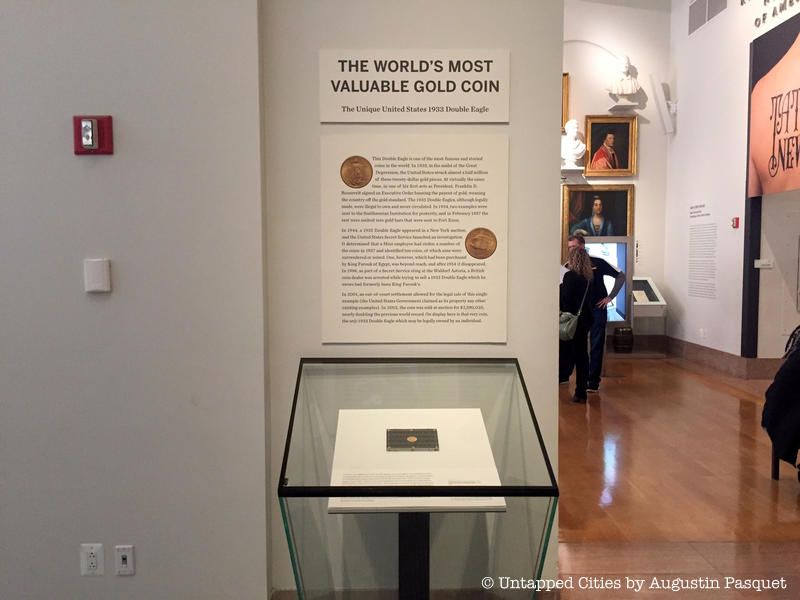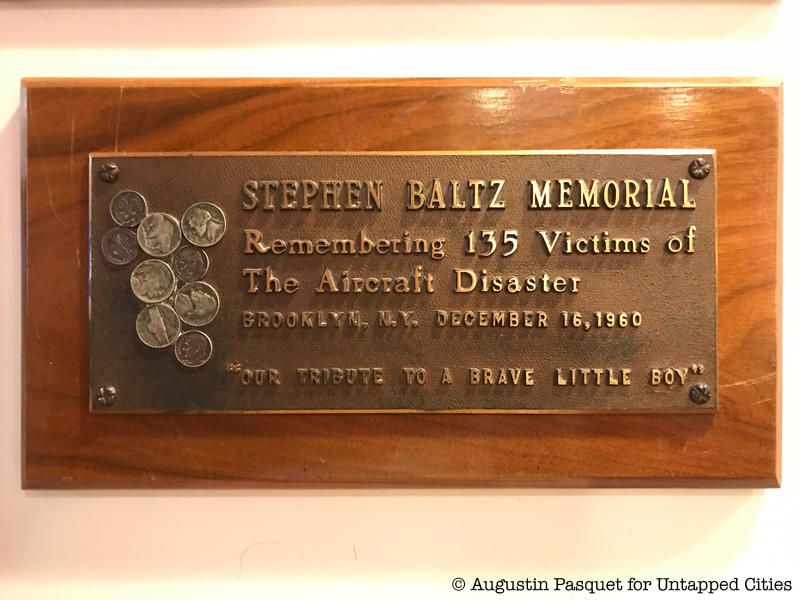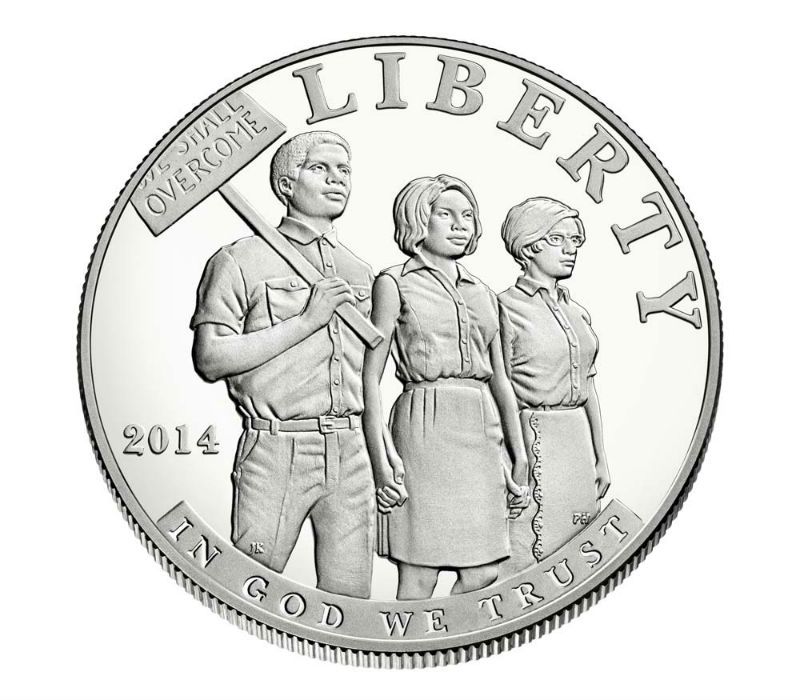Behind the Scenes of "The Eternal Space," A Play About Penn Station's Demolition
This Thanksgiving, our Chief Experience Officer reflects on his gratitude for the play that changed his life!



New York City is home to some of the world’s most intriguing collections of coins which span centuries and values. From the most expensive coin in the world to coins celebrating the accomplishments of Civil Rights activists, and those remembering the crime-ridden days of the subway system, these New York City coins have worth far beyond currency.

The Double Eagle Coin, the world’s most valuable coin, is on view at the New-York Historical Society.
The New-York Historical Society is home to the world’s most expensive gold coin: The Double Eagle Coin. Worth more than $10 million, the coin was designed at the commission of Theodore Roosevelt by renown sculptor Augustus Saint-Gaudens, who also designed the interior of the Cornelius Vanderbilt II mansion.
445,000 of these Double Eagle Coins were minted in 1933, but due to Franklin D. Roosevelt’s executive order banning the payout of gold, only two of these coins were retained, while the rest were melted down to gold bars in 1937.
When one of these coins showed up in an auction in 1944, the Secret Service discoverd a batch of coins stolen by a Mint employee in 1937. Nine were seized by the Secret Service, but a single coin was sold to King Farouk of Egypt and disappeared. It was later discovered in the possession of a British coin dealer. An agreement was settled in court that the Double Eagle coin could be sold, and today it remains “the only 1933 Double Eagle which may be legally owned by an individual,” according to the New-York Historical Society.

The plaque at the New York Methodist Hospital’s chapel featuring pocket change of victim Stephen Baltz.
In New York Methodist Hospital’s Phillips Chapel, there is an unassuming plaque melded with coins honoring the victims of the 1960 plane crash in Park Slope, Brooklyn. Two commercial airliners collided on Staten Island on December 16, 1960; one crashed onto Staten Island, and the other in Park Slope, Brooklyn. Of all 128 passengers aboard the planes, there were no survivors except for 11-year-old Stephen Baltz, a sixth grader travelling to New York from a Chicago suburb.
He was supposed to fly several days prior with his sister and mother to visit his grandparents in Yonkers for the holidays, but a cold delayed him until his father sent him on the ill-fated plane ride on the 16th. He was the lone survivor of the crash, but succumbed to his injuries a day later at the New York Methodist Hospital. In the hospital’s Phillips Chapel, a plaque is dedicated to the victims of the tragedy, featuring 65 cents— Baltz’s pocket change at the time of the crash.
 A collection of fake subway tokens on view at the New York Transit Museum.
A collection of fake subway tokens on view at the New York Transit Museum.
The New York Transit Museum is home to a wide display of slugs, or fake coins, used to avoid payment of fare by subway riders prior to the days of MetroCards. Tokens were used by the New York Transit Authority System from 1953 until 2003. One form of fare evasion is known as “token sucking” in which criminals would use gum wrappers, paper, cardboard of even matchbooks to stuff the token slot. When a frustrated rider would go to the booth to complain that the turnstile did not move, the perpetrators would steal the tokens by sucking them out.
Those criminals who did not practice “token sucking” used counterfeit coins, seen above. These included foreign coins, washers, amusement tokens and tokens from other fare systems. The Transit Authority made several designs of subway tokens over the years, such as a design with a “Y” cut out of “NYC”, but the MetroCard ultimately proved to be the only solution to end the fraud.

Coin commemorating the Civil Rights Act of 1964, on view at Museum of American Finance. Image from Wikimedia Commons by US Mint.
“For the Love of Money: Blacks on US Currency,” a traveling exhibition on loan from the Museum of UnCut Funk, is on view at the Museum of American Finance through January 2018. The US Department of the Treasury announced last year that Harriet Tubman would grace the $20 bill in 2020, marking the first recognition of black and women’s activists on paper money.
However, a long tradition exists of commemorating these activists on coins, medals, and medallions, as seen in this exhibit. Those on display honor athletes, entertainers, politicians, and Civil Rights leaders including Rosa Parks, Sojourner Truth, and Jackie Robinson as well as important Civil Rights accomplishments such as the Voting Rights Act of 1965 and Desegregation in Education.

Pectoral with Coins and Pseudo-Medallion at the Metropolitan Museum of Art features coins with images of Byzantine emperors. Image from the Metropolitan Museum of Art, in public domain.
On view at the Metropolitan Museum of Art is a pure gold neck ring made of coins estimated to have been made in 500 AD. These rings were believed to be used to honor military heroes at coronations. The pectoral was found in Egypt but was originally made in Constantinople as, according to the Met, “a personification of that city is depicted on the reverse of the central medallion.”
The coins within the medallion feature illustrations of Byzantine emperors, and the rings below the pectoral’s edge once held a medallion of the emperor Theodosius I. Imagery suggest this golden neck ring is a “collection of military trophies that once belonged to a distinguished general or a member of the imperial court.”
Next, check out 18 Art Installations and Exhibits Not to Miss in NYC in September 2017.
Subscribe to our newsletter